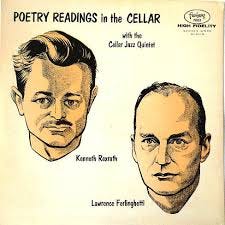Kenneth Rexroth Saw The High Water Mark Where the Wave Finally Broke
Before the Beats, Before MLK: Two Undeterred American Lives
When was the last time you picked up a thick book, and cancelled everything you planned for the weekend, because nothing was more important than racing to the end?
An Autobiographical Novel, by Kenneth Rexroth
I lucked out— I discovered the most extraordinary memoir by the poet/translator later known as “King of the Beats” — Kenneth Rexroth. I started reading it out loud to my partner, and then he got hooked, too. Now it’s your turn.
While Rexroth’s later life is California legend, his 1905-1927 youth is the subject of his memoir. It is a “you-are-there” anthropological account that, if there was any justice, would be part of every American high school history class.
When Doubleday first published KR’s life story, they insisted on adding the word “Novel” to the title because they were afraid of getting sued by . . . everyone. You understand the controversy from the first page. He wrote it when he was only 22, and you can barely keep up.
Long before Rexroth was counseling Ginsburg on Howl



